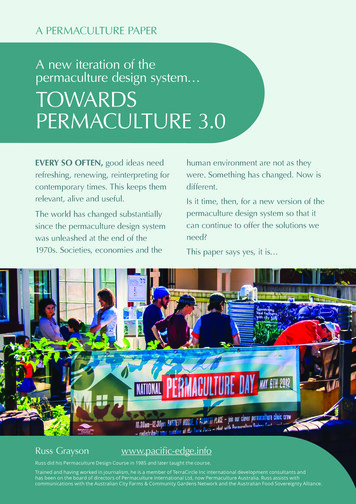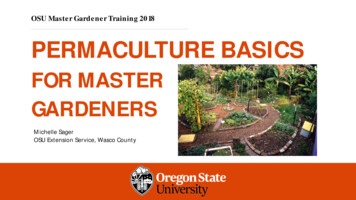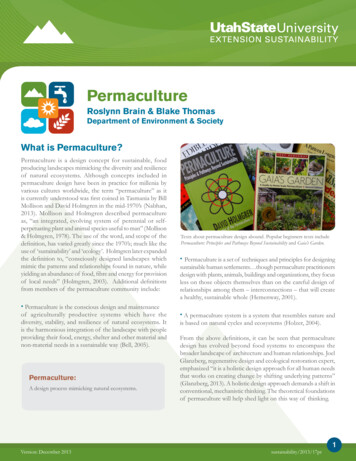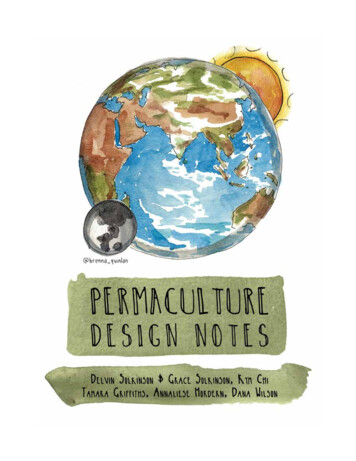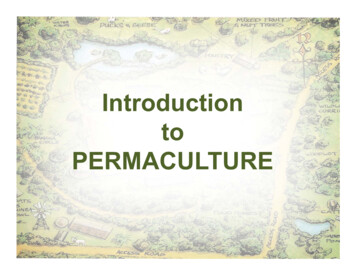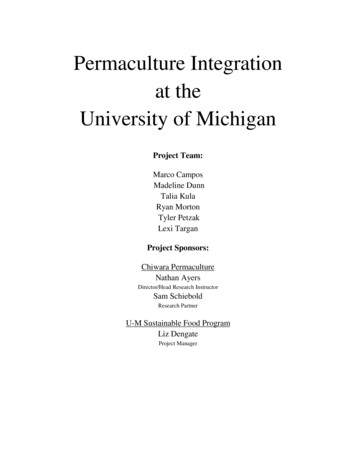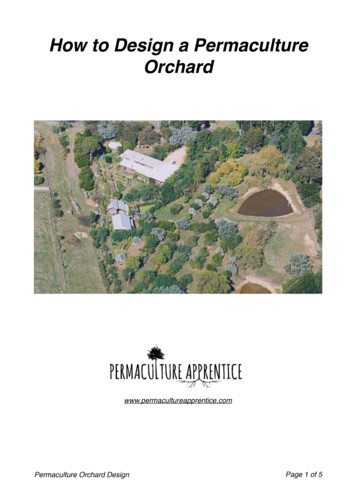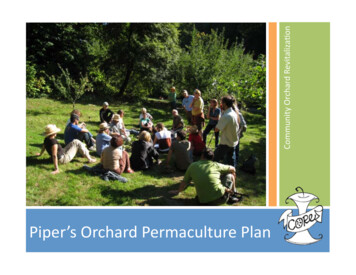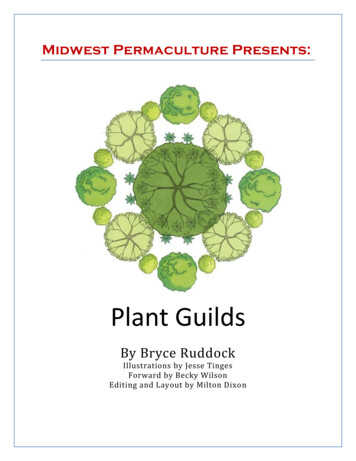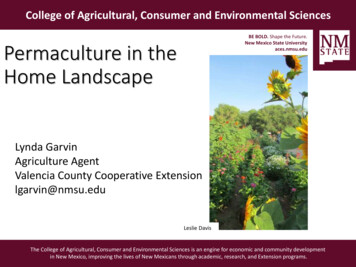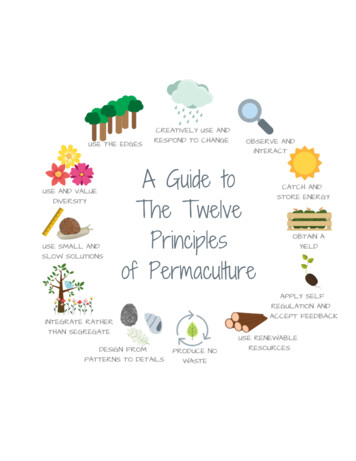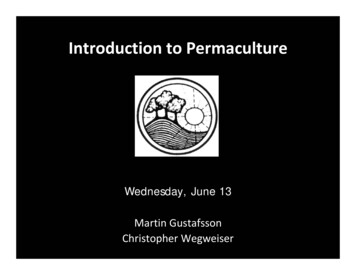
Transcription
Introduction to PermacultureWednesday, June 13Martin GustafssonChristopher Wegweiser
Cultivated & Productive Ecologies Working with microclimateForest gardensIntensive gardeningPerennial vegetablesPerennial grainsWoody agricultureCoppice
WindbreaksVaris Bokalders – Byggekologi (2004)Patrick Whitefield: Earth Care Manual (2004)
Sun trapsBill Mollison – Introduction to Permaculture (1991)
BuildingsPatrick Whitefield: Earth Care Manual (2004)
Frost pocketsBill Mollison – Introduction to Permaculture (1991)
Forest gardensMartin Crawford – Creating a Forest Garden (2010)
Jacke & Toensmeier: Edible Forest Gardens (2005)
Martin Crawford – Forest Garden
Intensive gardening Raised bedsSeed savingDiversity & polyculturesSolar heated greenhouse
Bill Mollison – Introduction to Permaculture (1991)
Lena Israelsson – Odla orientaliskt (1998)
Perennial vegetablesSea Kale (Strandkål)Asparagus (Sparris)
Perennial vegetablesRamson (Ramslök)Ostrich Fern (Strutbräken)
Perennial grainshttp://en.wikipedia.org/wiki/Perennial grain
Woody agriculturehttp://www.badgersett.com/
Coppicehttp://en.wikipedia.org/wiki/Coppicing
Efficient energy planning Sector analysis Zone planning Slope
Sector Analysis Sun sector flows of sun, light, rain, water flow, wind, noise andpotential fire as they enter and move through the -book/energyefficient-planning/
��process‐3/assessment‐phase/
Further Aspects of Analysis Legislation People and Community Physical resources– Energy– Capital– Waste disposal and recycling– Economic resources Economic Resources Vegetation and Wildlife Aesthetics
Zone planningBill Mollison – Introduction to Permaculture (1991)
Bill Mollison – Permaculture: A DesignersManual (Tagari 1988)
http://homebiome.com/
Slope Site in profile Downhill flow of resources/energyPatrick Whitefield: Earth Care Manual (2004)
Jacke & Toensmeier: Edible Forest Gardens (2005)
Geoff Lawton – Swales
Food from Dryland Gardens ‐ An Ecological, Nutritional, and Social Approach to Small‐ScaleHousehold Food Production (1991)
Water Harvesting Techniques Catch from buildnings, structures, hardsurfaces, land. Store on land: barrels, ponds, cisterns Store in plants & soil Store at highest potential spot Use at highest potential level ” move as long as possible, be used as manytimes as possible, get in contact with as manyelements as possible, over as long time aspossible”
Varis Bokalders – Byggekologi (2004)
Pumps powered by the flow of water:Sling acts/04‐027.htm
Ram pump
Grey Water Recycling
Resilience, large‐scale land restorationtechniques and designing for extremes Climate change Diversifying our options for food/water/heat/shelter Medicinal plants Transportation options Specialization within different areas
Geoff Lawton – Greening the Desert
Buildings, Structures and Energy Low & sustainable energy useLocal adaptationHealthy & sustainable materialsCycling of nutrientsRetrofittingLifestyle change
Den selvforsynende landsbyen, Denmark
Den selvforsynende landsbyen, Denmark
Urban Environment Permaculture In an urban environment, what kind ofresources are there available?
NYC
NYC High Line
Chicago
Depave ‐ Portland
Andrew Faust – Occupy the Economy
Thank you!Don’t forget your permaculturegoogles!
Bill Mollison – Introduction to Permaculture (1991) Forest gardens Martin Crawford – Creating a Forest Garden (2010) Jacke & Toensmeier: Edible Forest Gardens (2005) Martin Crawford – Forest Ga
